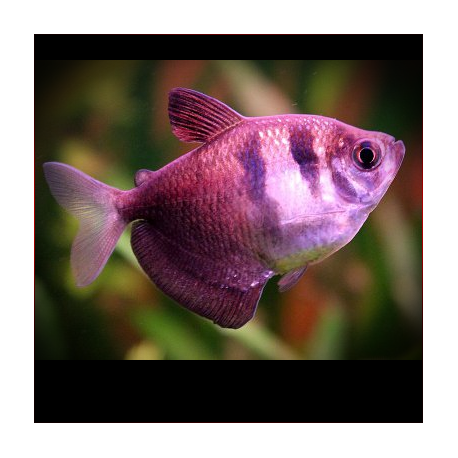More info
Datasheet
| Minimum Tank Size | 70 litres / 18.49 US gallons |
| Maximum Size | 6.0cm / 2.36inches |
| Temperature | 20°C / 68.00°F - 26°C / 78.80°F |
| Hardness | 5-20ºdH |
| pH | 6.0-7.0 |
General Description
The Black Widow Tetra, scientifically known as Gymnocorymbus Ternetzi, is a ubiquitous species in the aquarium trade, popular for its peaceful nature and subtle coloration. It is commonly referred to as the Butterfly Tetra, Black Skirt Tetra, or simply Black Tetra. Selectively bred forms like long-finned and leucistic variations are also available, with artificially dyed specimens being unfortunately present in the market.
Aquarium Setup
The Black Widow Tetra is a relatively unfussy species when it comes to tank decor. It thrives in an active environment with ample open swimming space and some quieter areas. For optimal color display, dense plantings and floating vegetation are recommended, providing dim lighting. A moderate level of lighting with varied hiding spots will ensure the well-being of this species (see table for specific water conditions).
Behaviour
This tetra is well-suited for community tanks, showcasing peaceful and lively behavior. Although known to nip fins, maintaining them in a shoal of at least 12 individuals can help contain any squabbling within the group. They cohabit well with livebearers, danios, rasboras, other tetras, and peaceful bottom dwellers like Corydoras. Additionally, they make suitable companions for robust dwarf cichlids and larger species like angelfish due to their rounded shape.
Feeding and Diet
As an omnivorous species, the Black Widow Tetra is easy to feed, accepting flakes, granules, as well as small live and frozen foods such as Daphnia and bloodworms. Offering a varied diet is recommended for their optimal health.
Reproduction & Dimorphism
Breeding the Black Widow Tetra can be quite straightforward, requiring a separate tank with appropriate conditions for successful spawning. The females are notably larger and rounder than males, with differences in fin shapes. Spawning can occur in pairs or groups, with proper conditioning and tank setup crucial for the survival of the eggs and fry.
Habitat and Distribution
In the wild, these tetras are found in small, slow-moving creeks, tributaries, and streams with dense overhanging vegetation in the Rio Paraguay and Guaporé basins across Brazil, Bolivia, and Argentina.

